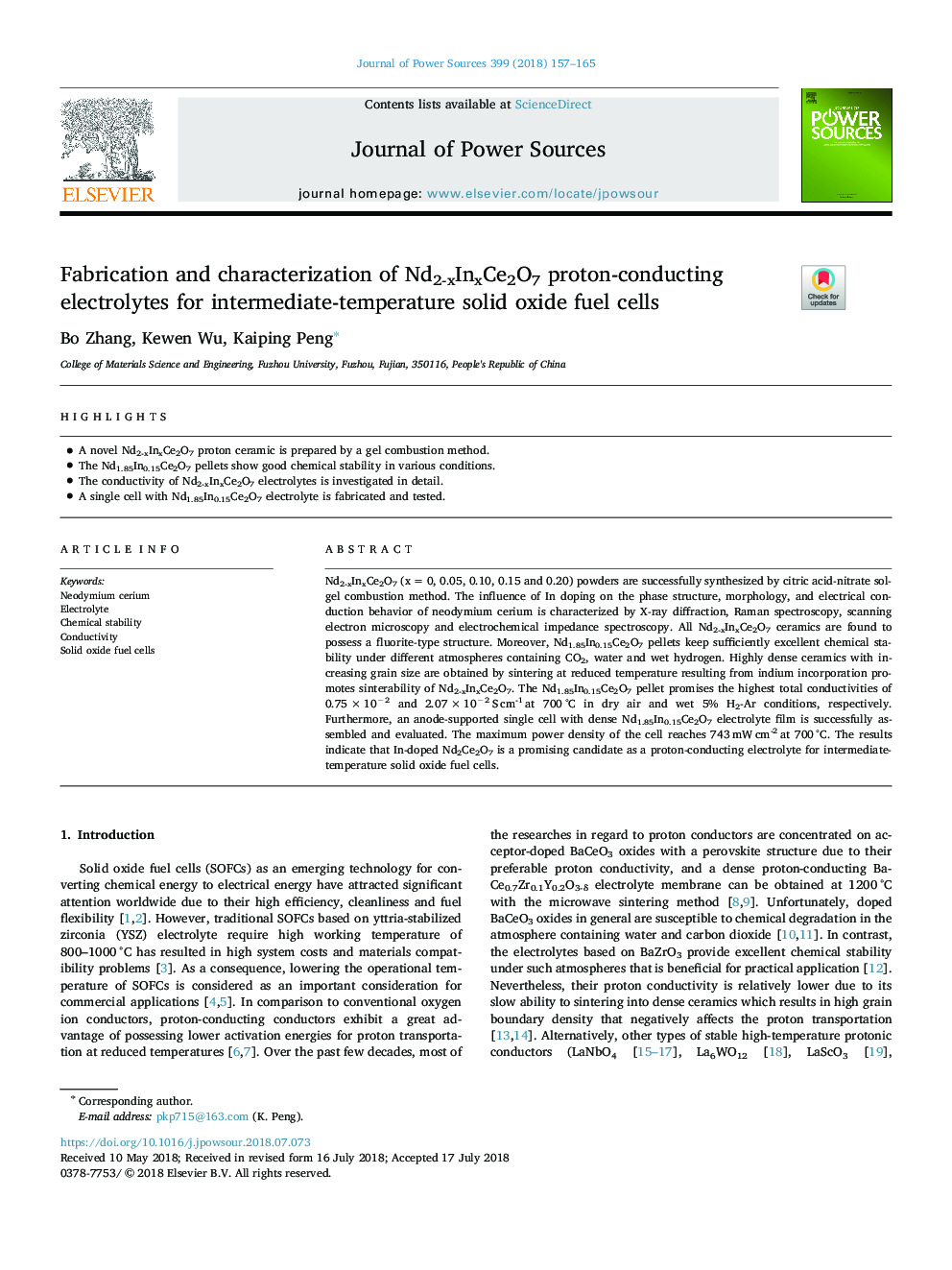| Article ID | Journal | Published Year | Pages | File Type |
|---|---|---|---|---|
| 7724749 | Journal of Power Sources | 2018 | 9 Pages |
Abstract
Nd2-xInxCe2O7 (xâ¯=â¯0, 0.05, 0.10, 0.15 and 0.20) powders are successfully synthesized by citric acid-nitrate sol-gel combustion method. The influence of In doping on the phase structure, morphology, and electrical conduction behavior of neodymium cerium is characterized by X-ray diffraction, Raman spectroscopy, scanning electron microscopy and electrochemical impedance spectroscopy. All Nd2-xInxCe2O7 ceramics are found to possess a fluorite-type structure. Moreover, Nd1.85In0.15Ce2O7 pellets keep sufficiently excellent chemical stability under different atmospheres containing CO2, water and wet hydrogen. Highly dense ceramics with increasing grain size are obtained by sintering at reduced temperature resulting from indium incorporation promotes sinterability of Nd2-xInxCe2O7. The Nd1.85In0.15Ce2O7 pellet promises the highest total conductivities of 0.75â¯Ãâ¯10â2 and 2.07â¯Ãâ¯10â2â¯Sâ¯cm-1â¯at 700â¯Â°C in dry air and wet 5% H2-Ar conditions, respectively. Furthermore, an anode-supported single cell with dense Nd1.85In0.15Ce2O7 electrolyte film is successfully assembled and evaluated. The maximum power density of the cell reaches 743â¯mWâ¯cm-2â¯at 700â¯Â°C. The results indicate that In-doped Nd2Ce2O7 is a promising candidate as a proton-conducting electrolyte for intermediate-temperature solid oxide fuel cells.
Related Topics
Physical Sciences and Engineering
Chemistry
Electrochemistry
Authors
Bo Zhang, Kewen Wu, Kaiping Peng,
